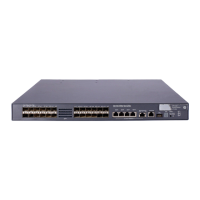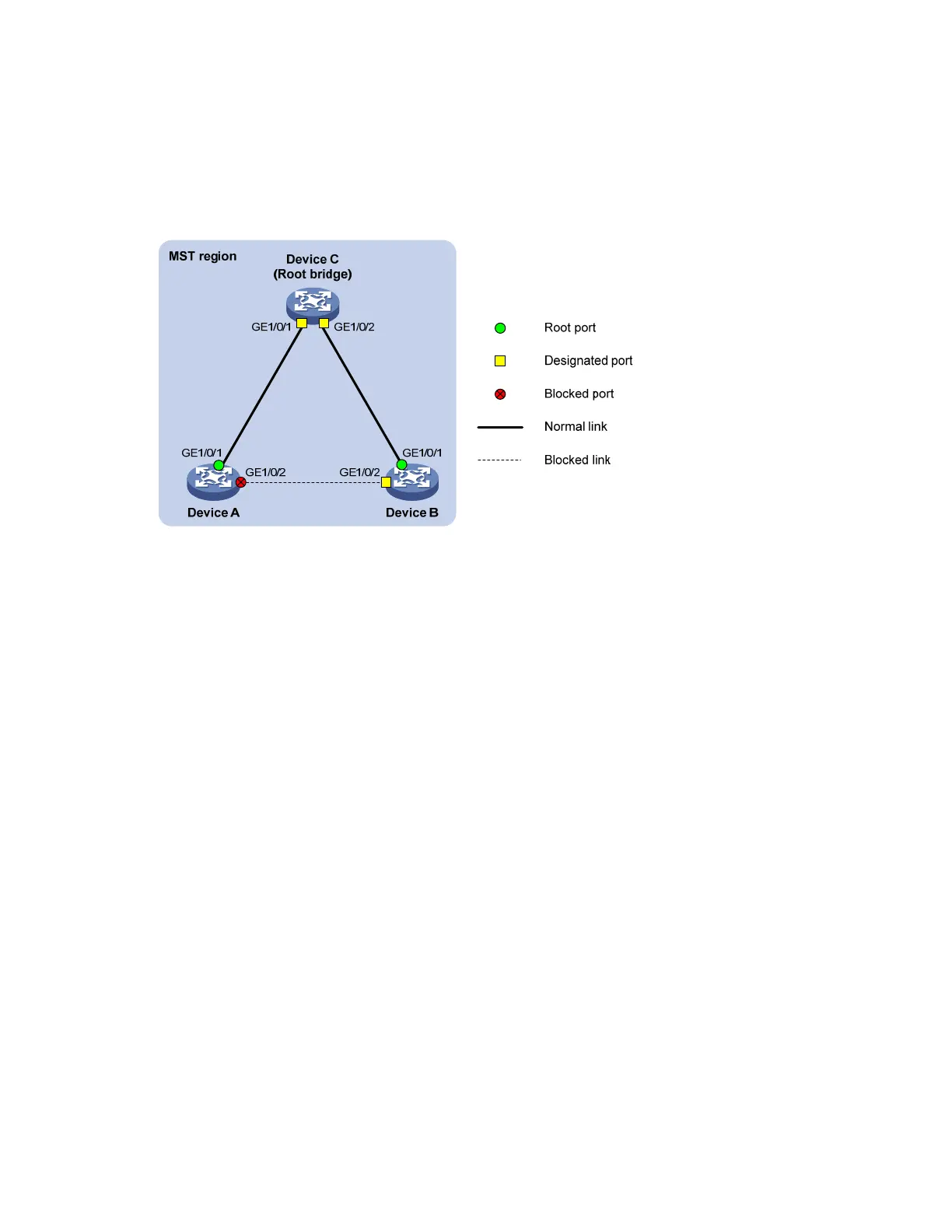85
As shown in Figure 23:
• Device A and Device B connect to Device C, which is a third-party device. All these devices are in
the same region.
• Enable digest snooping on Device A’s and Device B’s ports that connect Device C, so that the three
devices can communicate with one another.
Figure 23 Digest snooping configuration
2. Configuration procedure
# Enable digest snooping on GigabitEthernet 1/0/1 of Device A and enable global digest snooping on
Device A.
<DeviceA> system-view
[DeviceA] interface gigabitethernet 1/0/1
[DeviceA-GigabitEthernet1/0/1] stp config-digest-snooping
[DeviceA-GigabitEthernet1/0/1] quit
[DeviceA] stp config-digest-snooping
# Enable digest snooping on GigabitEthernet 1/0/1 of Device B and enable global digest snooping on
Device B.
<DeviceB> system-view
[DeviceB] interface gigabitethernet 1/0/1
[DeviceB-GigabitEthernet1/0/1] stp config-digest-snooping
[DeviceB-GigabitEthernet1/0/1] quit
[DeviceB] stp config-digest-snooping
Configuring no agreement check
In RSTP and MSTP, the following types of messages are used for rapid state transition on designated ports:
• Proposal: sent by designated ports to request rapid transition
• Agreement: used to acknowledge rapid transition requests
Both RSTP and MSTP devices can perform rapid transition on a designated port only when the port
receives an agreement packet from the downstream device. RSTP and MSTP devices have the following
differences:

